How events and policies of government of India shaped the Kashmiri narrative
Compiled by Mili Verma
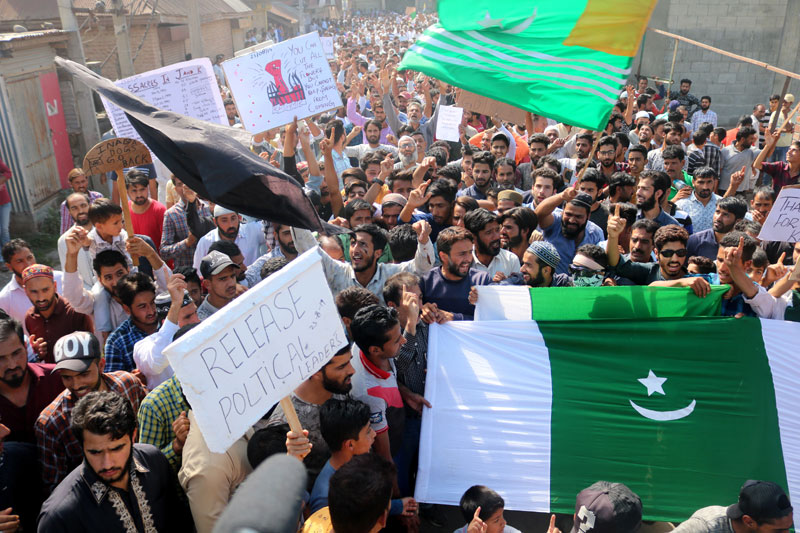
8 December 1989:
First major militancy-related incident in Kashmir. Rubaiya Sayeed, the daughter of then Union home minister, Mufti Mohammad Sayeed is abducted by JKLF militants in Srinagar. They demand release of their jailed colleagues. On December 13, Rubaiya is released in exchange of five JKLF militants.
20 January 1990:
At least 20 persons are killed in the firing on protestors at Gawa-Kadal in the heart of Srinagar, triggering massive demonstrations and marches towards the United Nations Military observers Group in Srinagar.
13 February 1998:
Lassa Koul, director, Door Darshan is killed in Srinagar.
28 February 1990:
Soldiers fire on marchers at Zakoora and Tengpora in Srinagar.
2 March 1990:
Soldiers again open fire on peaceful marches in Srinagar, killing over two dozen civilians.
6 April 1990:
H.L. Khera, general manager of Hindustan Machine Tools, and Mushir-ul-Haq, Vice-Chancellor of Kashmir University are abducted in Srinagar and killed by their abductors four days later.
21 May 1990:
Mirwaiz Maulvi Farooq, Imam of historic Jamia Masjid and a noted religious and political leader of Kashmir is assassinated by militants.
July 1990:
Jammu and Kashmir Disturbed Areas Act passed.
27 February 1991:
Nahida Imtiaz, daughter of Saifuddin Soz, then a senior NC leader is abducted by militants. She is set free on April 8 in exchange for a militant.
31 March 1991:
Two Swedish engineers employed with Uri Hydel Project are abducted by militants.
11 June 1991:
At least 32 persons are killed in CRPF firing on marchers at Chota-Bazar in downtown Srinagar.
28 June 1991:
K. Doraiswamy, a senior executive with the Indian Oil Corporation is abducted and released on August 20, in exchange of four militants.
6 January 1993:
Massacre in Sopore. At least 55 civilians are killed.
10 April 1993:
After a gunfight between militants and soldiers, the Lal Chowk is burnt.
15 October 1993:
Hazratbal mosque is besieged by militants and surrounded by security forces, triggering a stand-off.
22 October 1993:
51 unarmed civilians are killed when BSF men fire on protestors protesting against the continued siege of Hazratbal shrine at Bijbehara in South Kashmir’s Anantnag district.
 29 March 1994:
29 March 1994:
Lt. Gen. E.W. Fernandes and four other senior officers are killed in a bomb explosion at the Badami Bagh Cantonment in Srinagar. The officials were checking the ammunition in the cantonment when the explosion took place.
19 June 1994:
Mirwaiz of South Kashmir, Qazi Nissar Ahmad is killed by militants.
9 May 1995:
The historic Chrar-e-Sharif shrine is gutted after heavy exchange of fire between the militants led by Pakistani (Mast Gul) and the soldiers. The militants take over the area and the military launches an operation. Dozens of houses are destroyed in the gunfight in which a dozen militants and some soldiers are killed. Mast Gul manages to escape.
4 July 1995:
Five foreign tourists Donald Hutchings, Keith Mangan, Paul Wells, Hans Ostro and Dirk Hasert are kidnapped by al Faran from Pahalgam health resort.
16 September 1996:
Amidst boycott of duties by government employees, the assembly election is held in Kashmir. National Conference wins the elections.
25 January 1998:
At least 23 Kashmiri Pandits are gunned down by suspected militants at Vandhama in central Kashmir district of Budgam.
17 April 1998:
At least 26 Hindu villagers are shot dead by militants in Prankote area in the Jammu province.
19 June 1998:
The militants gunned down 25 Hindu villagers at Champnari village in Doda district of Jammu province.
26 May 1999:
Kargil war breaks out.
13 July 1999:
After the end of the Kargil war, the militants launch the first fidayeen (suicide) attack on a BSF camp at Bandipora in North Kashmir. DIG and four BSF men are killed.
3 November 1999:
The suicide squad of Lashkar-e-Toiba attacks the Badami Bagh Cantonment in Srinagar. The defence spokesman and 10 soldiers besides two militants are killed in the gunfight.
27 December 1999:
Militants storm headquarters of Special Operations Group of J&K police at Haft-Chinar, killing a DSP and 11 policemen.
4 January 2000:
13 people are killed in a powerful explosion inside Fruit Mandi, Parimpora, in outskirts of Srinagar.
18 February 2000:
Militants carry out a powerful IED explosion in Tral area of Pulwama district. 10 security personnel are killed and six others injured.
2 March 2000:
35 Sikhs are massacred by unknown gunmen at Chattisinghpora in Anantnag district.
19 April 2000:
The first suicide bombing near the main gate of Badami Bagh. Two soldiers killed.
15 May 2000:
The J&K minister of state for power, Ghulam Hassan Bhat is killed in a powerful landmine explosion in South Kashmir.
26 June 2000:
National Conference-led J&K government passes Autonomy proposal in Assembly.
4 July 2000:
Indian government rejects the Autonomy resolution.
28 July 2000:
Hizbul Mujahideen announces unconditional ceasefire. The ceasefire is called off by the militant group on 8 August 2000.
1 August 2000:
At least 30 Hindu pilgrims on way to perform Amarnath pilgrimage are killed in a militant attack in Pahalgam area in South Kashmir. Another 18 men are gunned down in a village in the same district.
2 August 2000:
The death toll rises to 101.
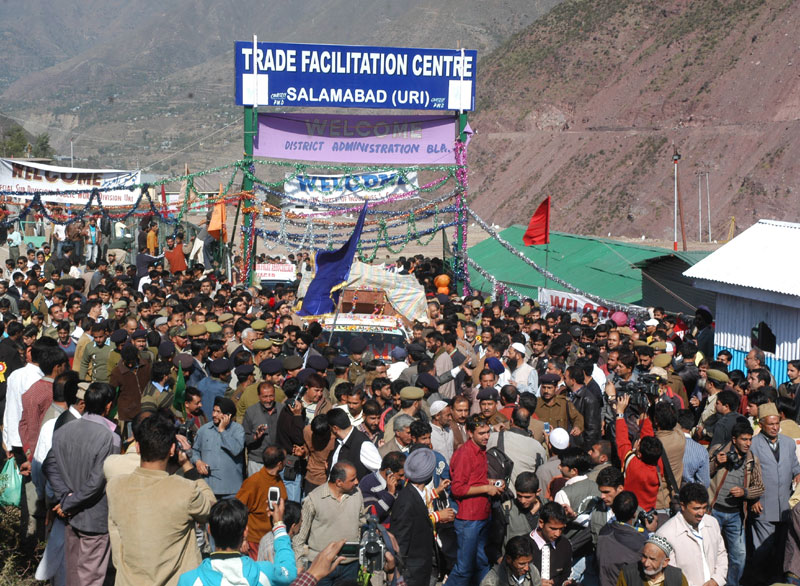
10 August 2000:
A powerful explosion at Residency Road leaves 11 people, including a photo journalist of Hindustan Times and a police officer dead.
25 December 2000:
The second suicide bombing targeting Army Headquarters at Badami Bagh. Four soldiers and the teenaged bomber are killed.
October 2001:
Militants attack Jammu and Kashmir Assembly in Srinagar with explosives and gunfire. At least 38 persons, mostly civilians are killed.
19 November 2001:
In view of the holy month of Ramadan, government of India announces a one-month unilateral ceasefire in Kashmir.
16 January 2001:
At least 11 persons including five militants of Lashkar-e-Toiba are killed when militants tried to storm the Srinagar airport.
9 February 2001:
The suicide squad of Lashkar-e-Toiba and al Umar storm Police Control Room in Srinagar. At least nine policemen and four militants are killed.
10 May 2001:
Eight Hindu villagers are abducted and killed by militants near Sajan in Jammu province.
23 May 2001:
India calls off the six-month unilateral ceasefire in Kashmir.
17 November 2001:
The militants storm security forces base at Ramban in Doda district. 10 security personnel and four civilians are killed.
14 May 2002:
The militants storm an army camp in Kaluchak area of Jammu killing 34 persons including the soldiers and their family members.
29 May 2002:
Cross-border shelling kills at least 23 people and wounds 17 others in Kashmir.
13 July 2002:
At least 27 Kashmiri Hindus are killed in an attack by militants at Qasimnagar, Jammu.
30 March 2002:
The militants carry out a fidayeen attack on Raghunath Temple. Three soldiers, two militants are among seven killed.
11 September 2002:
The militants ambush the election campaign rally of then state law minister, Mushtaq Ahmad Lone in Kupwara. The minister is killed.
16 September 2002:
First phase of polling for the assembly elections ends. At least nine militants are killed.
8 October 2002:
The election process ends with 44 per cent voter turn-around.
2 November 2002:
The PDP and Congress form the coalition government in the state. Mufti Muhammad Sayeed, patron of People’s Democratic Party, is sworn in as chief minister.
23 March 2003:
Suspected militants shoot dead former chief commander of Hizbul Mujahideen, Abdul Majid Dar. He had been instrumental in a week-long unilateral ceasefire announced by Hizbul Mujahideen in July 2000.
24 March 2003:
At least 24 Kashmiri Pandits are gunned down by suspected militants at Nadimarg in South Kashmir.
26 April 2003:
A group of fidayeen (suicide squad) attacks the local station of All India Radio in Srinagar. Three militants and equal number of soldiers are killed in the ensuing gunfight.
18 April 2003:
Prime Minister Atal Bihari Vajpayee offers hand of friendship to Pakistan during a speech in Srinagar. The offer is welcomed by Pakistan and sets the dialogue process rolling between the two countries.
2 May 2003:
India and Pakistan restore diplomatic ties.
22 July 2003:
A suicide squad of militants storms an army camp in Akhnoor, killing a brigadier and eight soldiers. Four top officers are also injured in the attack.
20 August 2003:
Shahnawaz Khan alias Gazi Baba, the chief operations commander of Jaish-e-Mohammad, believed to be the mastermind behind the attack on Indian Parliament, is killed in a gunfight with soldiers at Noorbagh, Srinagar.
13 September 2003:
The father of counter-insurgency Mohammad Yousuf Parray alias Kuka Parray is killed along with his two associates by militants in his hometown Hajan in Baramulla district.
17 October 2003:
The militants launch a fidayeen attack on the official residence of chief minister Mufti Mohammad Sayed on Maulana Azad Road. Two militants and two soldiers are killed.
26 November 2003:
India-Pakistan ceasefire along the 1,126-km-long Line of Control and international border in Jammu and Kashmir comes into effect.
8 April, 2004:
Militants attack an election rally of ruling PDP at Uri in Baramulla. 11 persons are killed and 58 injured.
23 May 2004:
19 BSF men, six women and five children are killed in a powerful explosion at Lower Munda near Qazigund on Srinagar-Jammu highway.
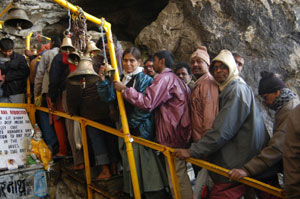 28 July 2004:
28 July 2004:
Militants attempt to storm a CRPF camp on the banks of Dal Lake. Five CRPF men and two militants are killed in the gunfight.
4 September 2004:
Prime Minister Manmohan Singh says his government ready to talk to any militant group in Kashmir, abandoning previous preconditions that the rebels must first disarm.
11 November 2004:
Prime Minister Manmohan Singh announces reduction in troops in Kashmir.
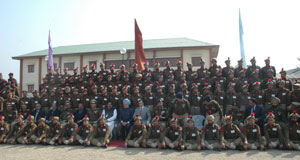 17 November 2004:
17 November 2004:
Prime Minister Manmohan Singh visits Kashmir, marking the start of a partial troop withdrawal.
5 December 2004:
10 CRPF men are killed in a powerful IED explosion at Naina, Batapora village in South Kashmir’s Pulwama district.
6 April 2005:
A day before the commencement of bus service from Srinagar to Muzaffarabad, the suicide squad of militants attack the Tourist Reception Centre. Two militants are killed while seven persons, mostly security personnel, sustain injuries.
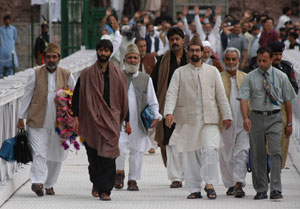 7 April 2005:
7 April 2005:
The Srinagar-Muzaffarabad bus service named ‘Caravan of Peace’ is flagged off by Congress president Sonia Gandhi and chief minister Mufti Mohammad Sayeed from Sher-e-Kashmir cricket stadium.
25 February 2006:
1st Round Table Conference on Kashmir is held in New Delhi under the chairmanship of Prime Minister Manmohan Singh. The Separatists stay away from the conference.
14 April 2006:
Militants carry out series of grenade attacks in Srinagar. At least five persons are killed and 44 others injured in the seven grenade attacks.
30 April 2006:
At least 22 Hindus are killed in the militant attack on Kuland village in Doda district.
21 May 2006:
Two suicide squads of militants attack a Congress rally in Municipal Park in Srinagar, killing three political activists and two policemen minutes before the scheduled arrival of chief minister Ghulam Nabi Azad. IGP (Kashmir), K. Rajendra Kumar is among the 25 injured.
25 May 2006:
Four tourists from Gujarat are killed and six injured when militants attacked their vehicle with grenade at Shalimar in outskirts of Srinagar.
25 May 2006:
2nd Round Table Conference on Kashmir is chaired by Prime Minister Manmohan Singh in Srinagar. The five Working Groups (WGs) are formed to look into the Centre-State relations.
12 June 2006:
At least nine Nepalese and Bihari labourers are gunned down by suspected militants at Yaripora, Kulgam in South Kashmir.
25 April 2007:
3rd Round Table Conference on Kashmir is held in New Delhi.
June 2008:
The transfer of 800 kanals of forest land to Shri Amarnath Shrine Board (SASB) triggers massive protests in both Jammu and Kashmir which carries on for three months.
21 October 2008:
India and Pakistan open cross-LoC trade between two parts of Kashmir.
24 December 2008:
Assembly elections held in Jammu and Kashmir. Witness 62 per cent turnout.
30 December, 2008:
The former MP and National Conference leader, Omar Abdullah is chosen the new chief minister of the state.
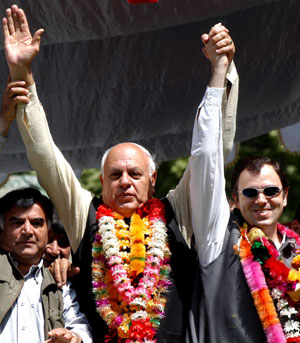 5 January 2009:
5 January 2009:
Omar Abdullah takes oath as the 11th and youngest chief minister of the state.
21 February 2009:
Two youth are killed allegedly by 22 Rashtryia Rifles personnel at Bomai, Sopore in North Kashmir, triggering Valley-wide protests.
24 March 2009:
Hundreds of Kashmiri mourners attend the funeral of the Indian army soldier Shabir Ahmad Malik at Kangan, in the outskirts of Srinagar. Shabir was killed in a gunfight with militants at Kupwara.
20 April 2009:
Senior Separatist leader Sajad Lone, son of assassinated Hurriyat leader, Abdul Gani Lone switches over to the mainstream politics and unsuccessfully contests the Lok Sabha elections from the Kupwara-Baramulla constituency.
31 May 2009:
The rape and murder of two young women allegedly by policemen trigger massive demonstrations across Kashmir. Four police officials are suspended.
6 June 2009:
Following Jammu and Kashmir (J&K) chief minister Omar Abdullah’s decision to appoint justice Muzaffar Jan (retd) to carry out the probe and complete inquiry related to the rape case, the office is set up to begin the investigation.
22 June 2009:
Three militants of the Lashkar-e-Taiyyaba (LeT) organisation and two commanders killed by the Army in an encounter at village Khour in Reasi District.
1 July 2009:
CM Omar Abdullah in the state’s capital announces that he has given 10 days’ time to officers for devising a plan for the first phase to withdraw the paramilitary CRPF from the Valley.
14 July 2009:
Pakistan constructs a large number of strong bunkers and observations posts near the International Border (IB) following the terrorist attack on 26 November, 2008 in Mumbai.
10 August 2009:
Militants target police post guarding Mohammad Abdullah, a leader of Democratic Party Nationalist, in the Sopore town of Baramulla District, killing all three policemen on duty.
30 October 2009:
Pakistan Army violates the ceasefire between India and Pakistan along the Line of Control (LoC) in Kupwara District by firing 14 mortar shells to give cover to a group of infiltrating militants, informs Daily Excelsior.
6-7 January 2010:
Suicide attack by LeT militants at Lal Chowk area in Srinagar.
30 April 2010:
Indian army claims to have prevented an infiltration from across the LoC, in Kupwara district of J&K by killing three militants from Pakistan. However, it was subsequently clarified that the three alleged militants were actually civilians of Rafiabad area.
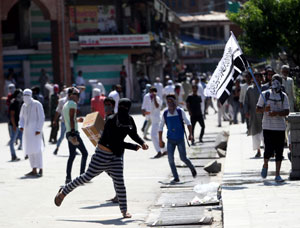 11 June-21 September 2010:
11 June-21 September 2010:
Massive unrest breaks out in response to the three killings, initiated by the Huriyat Conference, an alliance of 26 socio-political organizations in Kashmir supporting the state’s separatism. The protest included shouting pro-independence slogans, pelting stones at police, and violence which was dealt by firing teargas bullets by the police and paramilitary forces.
21 September 2010:
Pacifying of protests after Indian government announces a package of measures aimed at diffusing the conflict.
21 July 2011:
Federal Bureau of Investigation (FBI) for the first time acknowledges that Inter-Services Intelligence (ISI) of Pakistan sponsors and promotes terrorism related activities in the Kashmir Valley.
20 August 2011:
12 Militants and an Army officer are killed in a furious gunfight on the LoC in Bandipora District. Defence spokesperson Lt. Col. J.S Brar said it was the ‘eighth’ infiltration attempt from across the LoC that year and the largest to date.
March 9 2012:
CM Omar Abdullah states that the 20 years long militancy has affected 36,000 people in Jammu and Kashmir, more than 26,000 children are left orphaned and over 8,000 women are widowed.
25 September 2012:
A top LeT ‘commander’ gets killed in an encounter in the district of Kupwara.
6 January-28 October 2013:
A series of skirmishes happen along the LoC, triggered by India attacking a Pakistan border post and killing one soldier according to Pakistan. India claims the attack as a retaliation against ceasefire violations by Pakistan.
Oct 5 and 11- Peace talks between prime ministers of both countries take place in New York City, the situation however continues to escalate.
6 July 2014:
A BSF soldier gets killed after Pakistani Rangers, the paramilitary force of Pakistan, fires the Pittal border outpost along the international border in Armia in Jammu district.
This marks the start of ‘India-Pakistan border clashes’ between Indian Border Security Force (IBSF) and Pakistani Rangers.
11 October 2014:
India violates the ceasefire after a brief pause. Pakistani troops do the same.
23 December 2014:
BJP comes to power in J&K for the first time after joining a coalition government led by the People’s Democratic Party (PDP).
2 January 2015:
A 13-year-old girl gets killed in an Indian BSF ceasefire violation in Zafarwal city of Pakistan.
9 September 2015:
Pakistan delegation led by Pakistani rangers’ director general Umar Farooq visits India for bilateral talks with the Indian delegation led by BSF’s director general Devendra Kumar.
Both sides decide on ending ceasefire violations, leading to the de-escalation of border clashes that began in 2014.
2 January 2016:
Terrorist attack is conducted by 4-6 heavily armed men at the Pathankot Air Force Station, part of the western air command of the IAF. India blames Jaish-e-Mohammed (JeM) terrorist group for the violence.
 8 July 2016:
8 July 2016:
A series of protests begin in Kashmir, and eventually in Chenab and Poonch district of Jammu after the killing of Burhan Wani, a commander of Kashmir based militant organization Hizbul Mujahideen (HM). The strike was initiated by Hurriyat chairman Syed Ali shah and JK Liberation Front chairman Yasin Malik.
Anti-Indian protests start, stealing and violence take place, curfew imposed by the government is defied.
31 August 2016:
Curfew gets lifted in all the areas but gets reimposed later in some of them. Police and paramilitary forces use pellet guns, teargas shells, as well as assault rifles etc. to contain the unrest resulting in 90 civilian casualties.
13 September 2016:
The Indian Army launches ‘Operation Calm Down’ in South Kashmir to bring back order to the region. 4,000 more troops are pressed into service for the purpose with orders of using minimal force.
18 September 2016:
The famous ‘Uri Attacks’ take place when four terrorists carry out grenade attacks near the Indian Army brigade headquarters in Uri district of J&K.
19 army personnel get killed and some are left injured. The incident gets followed by gunned attacks lasting for 6 hours, during which all the four militants are eliminated.
29 September 2016:
India announces the successful conduct of ‘surgical strikes’ against military launch pads across the LoC in Pakistan occupied Kashmir region (PoK). This came as a retaliation to Uri Attacks.
16 November 2016:
Protestors announce a full day relaxation for 19-20 November, the first such decision after the protests started.
Mid-February 2017:
Protestors call off the strikes, marking the end of the unrest that began in July 2016.
March 1 2017:
The Central government gives a major shove to equip the Army and Paramilitary forces with advanced weapons and equipment.
8 July 2018:
Shutdown is observed on the death anniversary of militant commander Burhan Wani to ensure peace. Violent clashes nonetheless take place.
10 July 2017:
Hindu pilgrims on Amarnath Yatra are attacked and killed by terrorists in the Kashmir Valley, 8 pilgrims die and 18 get injured.
July 2017:
Followed by the instability, Operation All Out (OAO) a joint offensive by the Indian Security forces is launched to eradicate terrorists and militants in Kashmir.
10 February 2018:
JeM attacks an army camp in Sunjuwan, Jammu. 6 soldiers, 1 civilian, and 3 attackers are killed in the conflict. The attack follows chanting of anti-Pakistan slogans in the region.
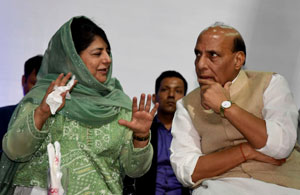 19 June 2018:
19 June 2018:
BJP walks out of coalition government with the PDP, resulting in fall of the state government. Governor’s rule is declared in the state.
10 November 2018:
The number of ceasefire violations reported to be the highest by Pakistan in past 8 years, informs Daily Excelsior.
14 February 2019:
A convoy of vehicles carrying CRPF personnel is attacked by the JeM terrorists. The perpetrators used the vehicle-borne suicide attack as the method to attack.
At least 40 security personnel are killed. The attack is popularly referred to as the ‘Pulwama Attack’.
26 February 2019:
India conducts ‘Balakot Air Strike’ under the name ‘Operation Bandar’ as a response to the killing of 40 CRPF personnel in Pulwama attack. Indian Mirage 2000 fighter jets flew across the LoC, dropping bombs in the terrorist training camp located in Balakot town of Pakistan.
27 February 2019:
Pakistan takes down an Indian warplane and imprisons its Wg Cdr Abhinandan Varthaman, in response to the strike.
1 March 2019:
The Wg Cdr is returned by the Pakistani military.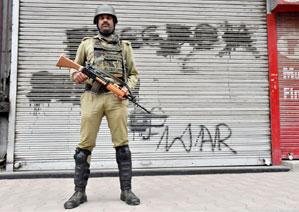
3 August 2019:
Journalists in Kashmir protest against the communication curfew, calling the complete shutdown of internet and mobile services as a ‘gag’.
4 August 2019:
Chief ministers Omar Abdullah and Mehbooba Mufti are house arrested. Internet and mobile services are curtailed, and section 144, which inhibits more than four people from gathering in public places is imposed.
5 August 2019:
India revokes ‘Article 370 and 35A’ from the Indian constitution, thus stripping away the state from its special powers.
The security lockdown and communications blackout begin and get imposed for safety reasons.
6 September 2019:
As per the Indian government’s report, around 4000 people are arrested due to the abrogation of Article 370.
28 October 2019:
Mobile services continue to be restricted for 85 days in a row, for almost 2.5 million prepaid mobile users in J&K.
31 October 2019:
‘Jammu and Kashmir Reorganisation Act, 2019’ comes into effect to reconstitute the state into two union territories called Jammu and Kashmir, and Ladakh.
16 January 2020:
Authorities release 9 more political leaders from detention.
25 January 2020:
2G internet connection is re-established but is restricted to the whitelisted areas.
24 March 2020:
PM Narendra Modi announces nationwide lockdown for 21 days in the country as a pre-emptive measure against the spread of Covid-19.
 24 March 2020:
24 March 2020:
Former CM Omar Abdullah of erstwhile state of J&K is released from detention.
4 August 2020:
A new curfew is imposed citing the first anniversary of revocation of Article 370 on August 5. Locals demand for the anniversary to be called as a ‘black day’.
16 August 2020:
4G LTE mobile services are reinstated after the Supreme Court rules the indefinite lockdown as illegal.
13 October 2020:
Former CM Mehbooba Mufti of erstwhile state of J&K is released from detention.
21 December 2020:
Pakistan violates CeaseFire Agreement (CFA) by firing the LoC in the Poonch district of J&K.
31 December 2020:
Director General of Police Dilbag Singh says the security forces has successfully carried out 100 counter-terrorism activities killing 225 terrorists.
5 February 2021:
4G internet services are restored in Jammu and Kashmir.
13 February 2021:
The ‘Jammu and Kashmir Reorganisation (Amendment) Bill, 2021’ is passed. The bill replaces the ordinance to merge J&K team of civil services officers with Arunachal Pradesh, Goa, Mizoram Union Territory (AGMUT) team.
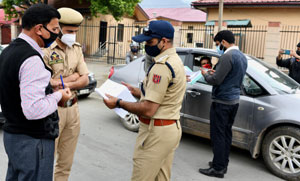
29 April 2021:
J&K imposes lockdown to curb the spread of the Covid-19 second wave in the country.

